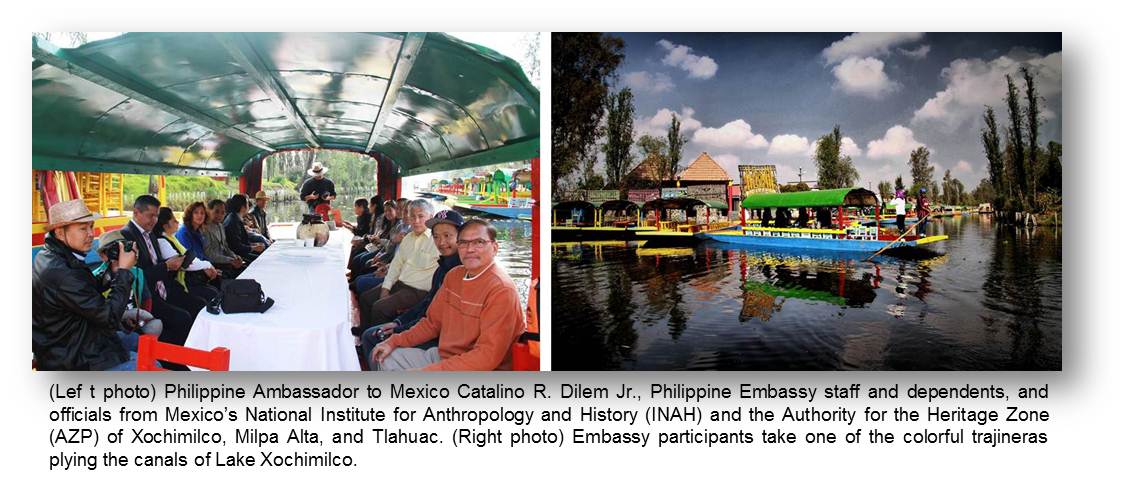
22 December 2014 – The Philippine Embassy in Mexico participated in a cultural education tour in the Xochimilco Ecological Park, a UNESCO World Heritage Site and Mexican National Heritage Zone on November 15.
Headed by Philippine Ambassador to Mexico Catalino R. Dilem, Jr., the Embassy staff and their dependents were received by officials of the National Institute for Anthropology and History (INAH) and the Natural, Cultural, and Human Heritage Zone Authority (AZP) of Xochimilco, Milpa Alpa, and Tlahuac, who were led in turn by INAH Director Dr. Francisco Javier López and AZP Executive Director Dr. Norma Ruz Varas.
The heritage zone of Lake Xochimilco, located on the outskirts of Mexico City, consists of a unique ecosystem and the ancient chinampa agricultural system. It was recognized as a UNESCO World Heritage Site in 1987 due to its cultural and historical significance, as the chinampas or artificials islands located on the shallow lake bed served as the primary food basket for Tenochtitlan (modern-day Mexico City) during the time of the Aztec Empire. Some chinampas are still in use up to the present day, and allow for up to five harvests of produce yearly due to the extremely fertile soil of the Xochimilco lake bed.
The Embassy participants were taken through the Park in a trajinera or flat-bottomed barge, the traditional means of transport through the Xochimilco canal system. Park officials then informed the participants of the efforts being undertaken to restore Xochimilco and its chinampas to their previous state. The Xochimilco Ecological Park is a shelter for diverse and unique forms of wildlife, including migratory birds such as herons, storks, and egrets, and endemic species such as the rare axolotl salamander, hummingbirds, and several species of ducks. END

